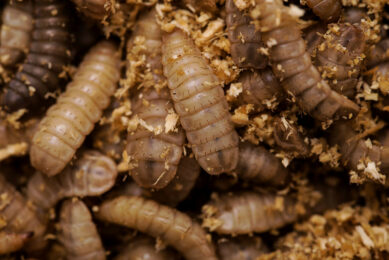Implications of the new US feed regulations

On 17 September 2015, the US Food and Drug Administration (FDA) published a final rule that imposes significant new regulatory compliance burdens on the animal feed industry. Here we explain what the implications of this new rule are on your business.
Firstly, the new rule finalises implemention regulations for compliance with the Hazard Analysis and Risk-Based Preventive Controls (HARPC) provisions of the Food Safety Modernization Act (FSMA). The HARPC provisions establish significant new requirements for food manufacturers with the goal of preventing foodborne illness.
The second component to the final rule requires animal feed facilities, for the first time, to comply with Current Good Manufacturing Practices (CGMP). These new requirements apply to both foreign and domestic facilities. These are major new requirements for the animal feed industry and we provide a brief overview of these requirements below.
Who has to comply with these rules?
Anyone manufacturing, processing, packing or holding animal feed has to comply with the CGMP requirements. These regulations are being implemented under the FDA’s general authority to ensure that food is not adulterated. The HARPC requirements, by contrast, generally apply to any facility that is required to register with the FDA because it manufactures, processes, packs or holds animal feed intended for consumption in the U.S.
If a facility is a ‘qualified facility’, however, the HARPC requirements are much more limited. A ‘qualified facility’ is either a ‘very small business’ (less than $ 2.5 million in sales) or is a facility that has limited sales to certain specific customers over a three-year period.
For facilities subject to the HARPC regulations, compliance activities must be undertaken by a ‘Preventive Controls Qualified Individual’ who is qualified by training or job experience to develop and apply a food safety system. This ‘individual’ can also be several individuals who each have the relevant training or experience.
What do these rules require?
The rule establishes, for the first time, that all animal feed must be produced under CGMP. The CGMP establish requirements similar to those that have been in place for human food, including plant and equipment design, sanitation and cleanliness, and for cases in which human food by-products are diverted for use in animal food. There also are certain labelling requirements for food held for distribution. Importantly, management must ensure that facility employees are sufficiently qualified to perform their duties through education, training and/or experience. These employees must receive training in animal feed hygiene and animal feed safety principles.
The HARPC regulations establish requirements for a written feed safety plan and a supply chain programme. The feed safety plan can be developed using food safety materials already in place and can be made up of many components rather than one comprehensive document. As a result, it is not necessary to start from the beginning if the requirements already are being met; rather, a company can fill in the gaps to result in a complete plan. As a whole, the feed safety plan should include sections on hazard analysis, preventive controls, monitoring, corrective actions and corrections, verification, and a recall plan.
The supply chain programme requires manufacturers/processors to have a risk-based programme for raw materials and other ingredients when a hazard requires a preventive control to be applied in the supply chain. A plan is specific to each facility and the complexity of the plan depends on the type of facility and feed(s) produced. For some facilities, a simple plan will be sufficient; nevertheless, each facility must undertake and document the feed safety plan development process.
Controls and monitoring
The development of the food safety plan is a multi-step process. First, the facility must prepare a written hazard analysis. The necessary controls must then be implemented. It is possible to conclude that there are no hazards that need preventive controls. Examples of preventive controls include process controls that ensure the control of safety parameters during production, sanitation controls or supply-chain controls. In some situations, a hazard may be controlled by your customer.
In other cases, a preventive control may be applied upstream by your supplier. When a supplier implements a preventive control, this is termed a ‘supply-chain-applied control’ that requires implementation of a written programme to document and verify the control. This programme includes supplier pre-approval, on-going checks and audits. Supply chain programmes are likely to impact your existing and future contracts, and may necessitate changes in your supplier operations. If preventive controls are implemented, the facility must ensure that these controls are effective and correct the identified problem (i.e. validation of controls), must monitor the controls to ensure they are consistently performing (monitoring) and must take action to address any food safety issues and prevent them from occurring in the future (corrective actions and corrections).
The facility must document its oversight of these actions (i.e. verification). In addition, the facility must establish a recall plan. Finally, the whole safety plan must be reanalysed every three years, while individual portions of the plan should be revised as necessary (e.g. as information on new hazards becomes available, manufacturing changes, etc.). As this description shows, there is a significant amount of record keeping that is associated with the development and implementation of a food safety plan. Not only must the final feed safety plan itself be written, but all of the development steps must be written as well. Moreover, records documenting the implementation of the food safety plan and supply chain programme over time must be kept for two years.
When do I have to comply with these rules?
Businesses have staggered compliance dates, based on business size. There are also staggered compliance dates between the CGMP requirements and the HARPC requirements (Table 1). A ‘small business’ is a business employing fewer than 500 full-time-equivalent employees (no limit on sales volume). Small businesses are not exempt from any of the regulatory requirements, but have more time in which to comply. There also are differing compliance dates for the requirements of the supply chain programme, which depend on the size of the facility receiving the food and whether the supplier is subject to the HARPC requirements. To sum up, as you can see, this final rule establishes a slew of entirely new regulatory compliance activities for animal feed companies that could require significant resource investment.











